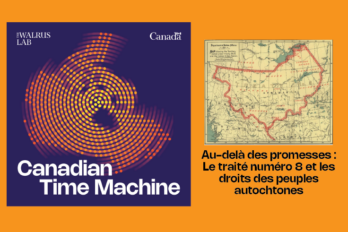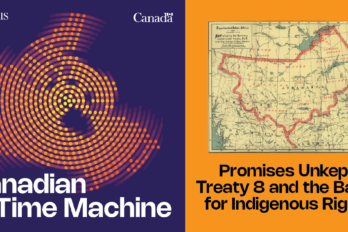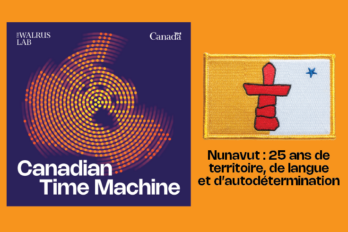HOST: When you think of the natural world, what’s the first thing that comes to mind? To some, it might be National Park forests, the Great Lakes, or the Rocky Mountains. Carly Ziter spoke about the ecosphere that often receives less attention: the one living within our cities. Carly Ziter is an assistant professor in the Department of Biology at Concordia University and member of the Smart, Sustainable, and Resilient Communities and Cities Research Group. She spoke at The Walrus Talks: Living Better in 2020.
CARLY ZITER:
Thank you for that introduction, I am Carly Ziter. During my PhD, my office-mates would leave every summer to study in Yellowstone National Park – one of our few remaining large intact temperate ecosystems. I spent my summers taking temperatures of parking lots and digging up the lawns of my urban neighbours. And five years later, there is no place I would rather study the natural world than right outside my front door. Don’t get me wrong. I love our big wild spaces, but the ecosystems that most fascinate me are right here in our cities, the parks and the yards and spontaneous plants along the train tracks that work to create safer, healthier cities for the four out of five Canadians who live in one, the bits and pieces of green that quietly save lives during heat waves, reduce food insecurity and boost mental health. But it’s easy to let this urban nature fade into the background to think of it as ordinary, rather than extraordinary.
How many Torontonians are unaware? That 300 species of wild native bees buzzed alongside them. How many new Yorkers rushed through their city? Never imagining that undiscovered pathogen fighting microbes live in the soils beneath their feet. How many of my fellow Montrealers walk by our provincial tree, the yellow Birch on Mount Royal without recognising it not knowing that if they were to stop and scratch and sniff a twig, it would smell just like peppermint by leaving the city to experience nature. We’ve lost sight of how much there is to discover at home until the pandemic shrink. Many of our worlds and suddenly neighbours were sharing newly discovered, walking paths, headlines acknowledged the saving grace of city parks during confinement stories of greenspace or lack of entered the mainstream with many realising for the first time, the systemic injustices that have shaped, who has access to nearby nature, never before had so many people been aware of this fundamental truth that I have dedicated my career to studying that to live better in the city.
Nature is critical, not just nice to have, but essential for wellbeing. I am not grateful for the pandemic. Talk of silver linings even feels inappropriate given the nature of the cloud that we’re still under, but I am grateful that our urban nature was still there for us in this time of crisis, despite efforts to cut it down, pave it over, fill it in and manicure it away. We still have urban forests to walk through at the end of the day, those hundreds of species of bees, still buds for now pollinating the gardens that so many of us felt compelled to grow this summer.
And I think it’s time for us to be there for urban nature in return to work for greener, more equitable future cities. I’m not suggesting we all become scientists or even activists I have in mind, a quieter movement led by all of us, all who collectively manage some of our largest opportunities for change the yards and institutional lawns and church grounds and vacant lots that make up so much of the ecological fabric of our cities. Scientists like me can calculate how much cooler or less polluted our neighbourhoods would be if lined by trees or which species to plant, to attract birds and bees. But we can’t get to this greener future without all hands on deck without you. So where do we start? We start by bringing urban nature to the forefront by noticing and appreciating what’s still here and growing it further. That’s why when my lab does our research, we invite the community to learn alongside us and why today I invite all of you to take a step towards becoming an urban naturalist. Next time you’re outside. And you see something interesting. I want you to learn its name. I suggest you start with a tree and you dig out an old field guide or download a naturalist app on your phone. And once you’ve met your tree, say, thanks for quietly making your life a little bit better every day.
HOST: Carly Ziter is an assistant professor in the Department of Biology at Concordia University and member of the Smart, Sustainable, and Resilient Communities and Cities Research Group. She spoke at The Walrus Talks: Living Better in 2020.





